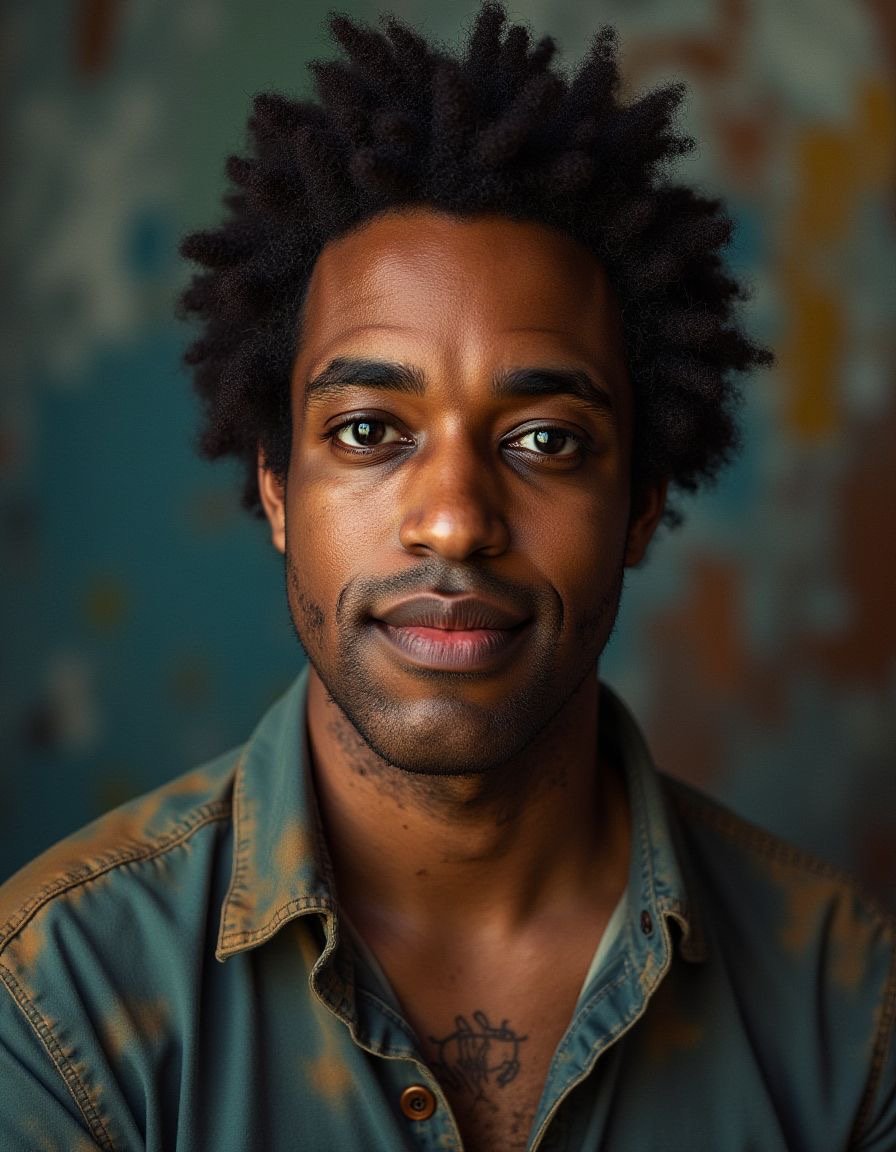Evolutionary Leadership: Rooted in Presence and Awareness
Introduction to Evolutionary Leadership
Welcome to the wonderful world of evolutionary leadership, where growth isn't forced but nurtured with care and attention. Imagine a garden—thriving not because someone yelled at the plants to grow but because they were tended with love and presence. Evolutionary leadership takes this gentle approach, creating environments where transformation can happen naturally.
Think of this style as leadership with a zen twist. Instead of issuing commands and expecting instant compliance, it's about connecting deeply with the moment and the people around you. It's the difference between shouting into the wind and whispering to the seeds. In this space, leadership becomes an art form, blending mindfulness and empathy into every interaction.
What makes evolutionary leadership stand out is its focus on presence and awareness. This isn't just about being "in the zone" but about truly being there—fully attentive and engaged. When leaders operate from a place of presence, they create spaces where others feel valued and understood. It's like giving your team the best soil, sunlight, and water to flourish.
As we dive into this journey, you'll discover that being an evolutionary leader means having a keen sense of what's happening beneath the surface. It's about sensing the unseen currents that drive behavior and influence outcomes. Much like a gardener senses the subtle changes in their garden, an evolutionary leader tunes into the emotional and relational dynamics at play. This awareness allows for a more nuanced and effective approach to leadership.
Now, don't worry if this all sounds a bit mystical. We're talking about practical steps that anyone can take to become more present and aware. Whether it's starting your day with a few moments of mindfulness or taking a pause to breathe between meetings, these small practices can make a huge difference.
And here's the best part: you don't need to be perfect. Evolutionary leadership isn't about having all the answers or never making mistakes. It's about being open, curious, and willing to grow. It's about creating a culture where everyone feels safe to explore and innovate. So, let's roll up our sleeves and get ready to cultivate some real change—one mindful moment at a time.
The Role of Presence in Leadership
Imagine presence as your secret leadership superpower. When you’re fully in the moment, it’s like giving your leadership game a turbo boost. Picture this: instead of juggling ten things at once and feeling like a circus performer, you’re focused, calm, and genuinely tuned into what's happening right now. This is presence—your leadership magic wand.
Being present isn’t just about reducing your stress levels (though that’s a sweet bonus). It’s about creating an environment where your team feels genuinely seen and heard. When people feel like their voices matter, magic happens. Creativity sparks, collaboration flows, and innovation isn’t just a buzzword—it’s the everyday norm. Think of it as turning your workplace into a fertile garden where ideas sprout and thrive.
When you’re present, you respond to situations with clarity instead of reacting on autopilot. It’s the difference between mindlessly swatting at a buzzing fly and calmly opening the window to let it out. Your decisions become more thoughtful, your actions more deliberate. This doesn’t mean you’ll never make mistakes, but you’ll handle them with grace and a clear head.
Now, let’s talk about meetings. We’ve all been in those soul-draining sessions where everyone is physically there but mentally checked out. When you bring presence into the room, it’s like adding a breath of fresh air. Suddenly, the energy shifts. Conversations become more meaningful, and people are more engaged. You might even find that meetings get shorter because everyone’s actually paying attention and getting things done. Who knew presence could be a time-saver?
Here’s the kicker: presence is contagious. When you model this quality, it spreads like wildfire. Your team starts to pick up on it, and before you know it, you’ve cultivated a culture of mindfulness and attention. People start showing up, not just physically but mentally and emotionally, ready to contribute their best.
So, next time you’re tempted to multitask during a conversation, remember the power of being fully there. Put down your phone, look your colleague in the eye, and listen like you mean it. Presence isn’t about perfection; it’s about connection. And in the realm of leadership, connection is where the real magic happens.
Daily Practices for Cultivating Presence
Alright, let's make your mornings a little more zen and a lot less frantic. Picture this: instead of waking up to a blaring alarm and rushing into your day, you spend ten blissful minutes just sitting. Yep, sitting. No agenda, no to-do list. Just you, your breath, and the world around you. Notice the rise and fall of your breath, the sensation of the chair beneath you, the distant hum of morning sounds. This simple practice is like a warm-up for your awareness muscles, getting them ready for the day ahead.
Now, let's talk about these nifty little presence pauses. They’re like the commercial breaks in your day, but way more beneficial. Set gentle reminders on your phone—nothing too jarring, maybe a soft chime. When it goes off, take three deep, conscious breaths. Feel the air fill your lungs, then let it go. Or, if you’re walking, shift your focus to the sensations in your feet. Feel the ground beneath you, the rhythm of your steps. These mini-breaks are like hydration for your awareness, keeping it fresh and vibrant.
Feeling a little frazzled between meetings or tasks? That’s the perfect time for a presence pause. Instead of diving straight into the next thing, take a moment to breathe and reset. Think of it as hitting the refresh button on your mental browser. You’ll approach your next task with more clarity and focus, and who knows, maybe even a dash of brilliance.
And here's a fun one—why not turn mundane chores into mindfulness exercises? Washing dishes? Feel the warmth of the water, the smoothness of the plates. Brushing your teeth? Notice the minty freshness and the sensation of the bristles. These everyday moments are golden opportunities to practice presence.
Remember, the goal here isn’t to become a meditation master overnight. It's about weaving small moments of mindfulness into your daily routine. It’s these little practices that build a strong foundation of presence. So go ahead, sprinkle these pauses throughout your day and watch your awareness grow.
Evening Integration for Sustained Awareness
As your day winds down, think of evening integration as your personal wind-down ritual. Grab a cup of your favorite tea, find a cozy spot, and let’s reflect with a light heart and an open mind. Remember, this isn't about grading your day; it's about gently understanding what worked and what didn’t in terms of staying present.
Start by playing back the day's highlight reel. What moments made you feel truly alive and in the moment? Was it a conversation with a colleague where you felt a genuine connection, or perhaps a quiet moment when you savored your coffee? Let those memories soak in like a warm bath.
Next, take a peek at the scenes where you got pulled away from the present. Maybe it was during a stressful meeting, or perhaps while multitasking. Notice these without judgment. They’re like plot twists in your daily story—there to teach you something. Ask yourself, what nudged you away from being fully there? Was it a distraction, an emotion, or simply a hectic pace? Understanding these nudges helps you navigate them better tomorrow.
As you reflect, set a gentle intention for the next day. Think of it as planting a seed for tomorrow’s presence. It could be as simple as reminding yourself to take a breath before you dive into a task or to really listen during a conversation. These small intentions act like little beacons, guiding you back to the present moment when you start to drift.
And hey, don't forget to celebrate the small wins! Maybe you managed to stay calm during a chaotic moment or took a few mindful breaths in the middle of a busy day. These are your victories, no matter how tiny they seem. Give yourself a pat on the back—you’re building a practice that nurtures sustained awareness.
So, as you let go of the day, do it with kindness towards yourself. Allow the day’s experiences to settle, much like soil resting overnight to be ready for the next day’s growth. You’re not just winding down; you’re laying the groundwork for tomorrow’s mindful moments. Enjoy this time—it’s your daily gift to yourself.
Developing Sensing Abilities
Let's dive into developing your sensing abilities—think of this as honing your Spidey-sense for leadership. It all starts with tuning into the world around you, expanding your awareness like a superhero surveying the city from a rooftop.
Kick off your mornings with a bit of field sensing. First, get a feel for the physical space you're in. Notice the details: the temperature, the light, the subtle sounds. It's like adjusting your antenna to pick up every signal. Next, tune into the emotional atmosphere. How does the room feel? Is it buzzing with energy, or is there a tension you can't quite put your finger on? Finally, widen your scope to the broader context. What's happening in your environment that could be influencing the mood or dynamics?
This practice isn't about becoming a psychic—it’s about becoming finely attuned to the subtle cues that often go unnoticed. Think of it like a chef tasting a dish and immediately knowing what's missing. By developing this ability, you can better read the conditions for growth and make more informed decisions.
Throughout your day, try to sense the invisible threads that connect people and situations. During interactions, pay attention to the quality of the connection. Is the conversation flowing smoothly, or does it feel like you're wading through molasses? Notice the energy between you and others. Sometimes, a simple observation can reveal a lot. Maybe a team member is unusually quiet during a meeting—could be they're feeling overlooked or stressed. Your enhanced sensing abilities will help you pick up on these nuances.
In meetings or group settings, use your spidey-sense to read the room. Who's engaged, who's checked out, and who's secretly fuming over the latest project hiccup? These insights are like a roadmap, guiding you toward more effective communication and collaboration.
Developing your sensing abilities also means being aware of the larger patterns at play within your organization. Notice where the energy is dynamic and where it feels stagnant. Are there certain projects that always seem to hit roadblocks? Pay attention to these patterns—they're telling you where attention and resources might be needed. By being attuned to these dynamics, you become better equipped to foster growth and navigate challenges with a deft touch.
So go ahead, channel your inner superhero and start honing those sensing skills. With practice, you'll find yourself more in tune with the subtle currents that drive your team's success.
Sensing in Relationships
Ever feel like you’re talking to someone but missing half the conversation? That’s where sensing in relationships comes in, and trust me, it’s a game-changer. Imagine you have a secret decoder ring that helps you pick up on the unspoken vibes between you and others. Cool, right? This practice isn’t about morphing into a mind reader; it's about tuning into the subtleties of interaction like a social ninja.
Start by paying attention to the energy between you and the other person. Does it feel like a lively dance or a clunky two-step? If it's flowing smoothly, you're in sync. If it feels off, there’s likely something unsaid or unresolved. Maybe your colleague’s terse response isn’t about the project but about the stress they're carrying from home. Being attuned to these undercurrents can help you navigate conversations with more empathy and effectiveness.
Let's talk body language. It’s like the subtitles in a foreign film—often more telling than the dialogue itself. Notice if someone’s arms are crossed or if they’re leaning in. These cues can reveal a lot about their openness or reluctance. And hey, it’s not just about them; be aware of your own body language too. Are you sending signals of openness or inadvertently coming off as defensive?
Ever catch yourself planning your response while someone else is talking? Guilty as charged. But here's the thing—when you're fully present, you listen to understand, not just to reply. This creates a deeper connection and makes the other person feel genuinely heard. It's like offering a warm, inviting space where real communication can happen.
Then there’s the art of asking good questions. These aren’t just any questions—they’re open-ended, inviting the other person to share more about their feelings and thoughts. Instead of asking, "Are you okay with this plan?" try, "What are your thoughts on this approach?" This subtle shift can open up a floodgate of insights and feelings, enriching the conversation.
Finally, trust your gut. Sometimes, you’ll sense something is off without any concrete evidence. Don’t dismiss these feelings; they’re often spot-on. Approach the situation with curiosity rather than judgment. A simple, “I sense something might be bothering you. Do you want to talk about it?” can work wonders.
System Sensing for Organizational Growth
Alright, let's zoom out and take a bird’s-eye view of your organization. Imagine you’re a skilled observer in a bustling ecosystem, noticing where the streams of energy flow freely and where they get dammed up. This is system sensing—your way to tune into the organizational vibes and guide growth with finesse.
First, picture yourself strolling through the different departments of your organization, much like a nature walk. Pay attention to where things feel vibrant and alive—those are your areas of high energy and productivity. Maybe it's the marketing team brainstorming a new campaign or the product development folks hitting their stride on a new feature. These are your thriving patches, and they can offer clues on what’s working well.
Now, let’s look at the areas that feel a bit more like a stagnant pond. Maybe there’s a team that’s constantly hitting snags or a project that’s been stuck in the same phase for ages. These are your red flags. Don't just gloss over them; dig deeper. What’s causing the block? Is it a lack of resources, poor communication, or perhaps an unspoken tension? By sensing these stuck points, you can figure out where to direct your attention and resources to get things moving again.
Ever noticed how some teams have that “spark” while others seem to be dragging their feet? That’s the invisible current of motivation and morale. It’s crucial to sense this because it directly impacts your organization's growth. If you catch a whiff of low morale, don’t ignore it. Check in with the team, and maybe even organize a casual meeting to get to the heart of the issue. Sometimes, a little recognition and support can go a long way in reigniting that spark.
Lastly, keep an eye out for emerging trends or patterns. Maybe you notice a recurring bottleneck in your project timelines or a common feedback point from your team. These patterns aren’t just random—they’re signals pointing you toward areas ripe for innovation and improvement. Address them head-on and watch how small changes can lead to significant growth.
So, put on your system sensing hat and get ready to navigate the intricate web of your organization. With a keen eye and an open heart, you’ll guide your team toward flourishing in ways you never imagined.
Illuminate Your Leadership Potential: The Radiant Leadership Program
Are you ready to transcend traditional leadership and become a true catalyst of organizational transformation? Our exclusive 9-Month Luminous Leadership Mentorship is more than a program—it's a profound personal and professional metamorphosis.
What Makes This Program Unique?
Beyond Skill Development: This is a deep dive into your leadership essence. We don't just teach leadership techniques; we illuminate your innate capacity to inspire, transform, and create meaningful change.
Holistic Transformation: Over nine transformative months, you'll:
Uncover your authentic leadership voice
Develop extraordinary emotional intelligence
Learn to create regenerative organizational cultures
Master the art of systemic thinking
Cultivate a presence that naturally draws forth potential in others
Personalized Guidance: Limited cohort size ensures intimate, tailored mentorship. You'll receive:
Monthly one-on-one deep-dive sessions
Quarterly immersive leadership retreats
Continuous personalized coaching
Access to our exclusive leadership community
Who This Is For:
Visionary executives seeking deeper impact
Emerging leaders ready to redefine organizational potential
Social entrepreneurs transforming complex systems
Conscious professionals committed to holistic growth
Investment in Transformation: This is not just a mentorship—it's an investment in your most profound leadership potential. Limited spots available to ensure maximum individual attention and collective synergy.
Your Invitation
Leadership is not a title. It's a continuous journey of awakening, connection, and profound human potential.








